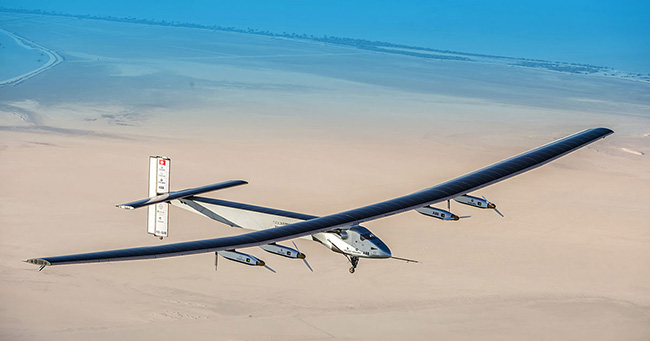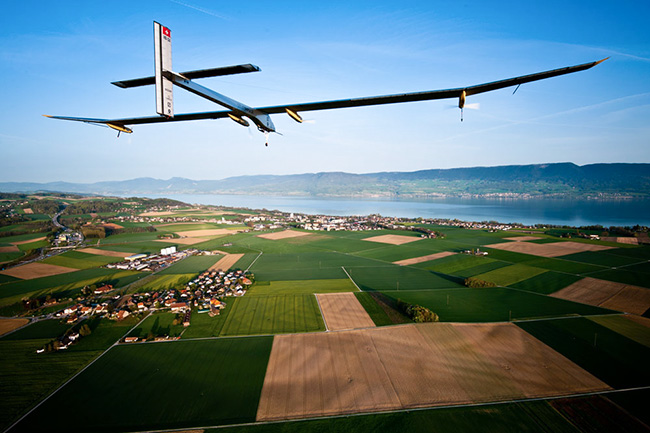Solar Impulse 2 plane managed to fly 8924 km in 3 days
5/3/2016, Milan Šurkala
Experimental solar plane Solar Impulse 2 continues its journey around the world. After almost 10-months break because of damaged batteries, everything is repaired and Bertrand Piccard managed to fly from Hawaii to Mountain View in California in 3 days.
Solar Impulse 2 is an experimental solar plane that should finish the journey around the Earth using only solar power. The idea was born 12 years ago by Swiss explorer and psychiatrist Bertrand Piccard and André Borschberg. They started from Abu Dhabi in March 2015 and they managed to land in Hawaii in July 2015. This eighth 8924km-long flight was the unlucky one. It was the five-day journey, batteries overheated and were irreparably damaged. Although it seemed that the break will last only for few weeks, the plane stayed for the next almost 10 months in Hawaii.

Finally, Bertrand Piccard was able to continue and the plane took off from Hawaii on April 21, 2016,. It landed in Mountain View in California after less than three days on April 24, 2016. The plane has a wingspan of 63.4 metres that is close to the wingspan of Boeing 747 Jumbo Jet and it weighs 1600 kilograms (3500 lbs) like an SUV car. Solar Impulse 2 is powered by four small electric engines, each of them produces 10 HP only (approx. 4×7 kW). The aircraft is equipped with 17,000 solar cells.

The aircraft Solar Impulse 2 needs sunny weather to fly and to charge its batteries in order to be able to fly during nights. Because it flies 8634 metres (5.37 mile) above the ground, clouds can be above the aircraft and therefore, it is dependent on the weather. For comparison, Google's solar drones that should spread internet connection in poor countries, are able to fly in 20km height above all the clouds and can remain in the sky for five years. It is likely that solar planes would not be common in the near future because of the very low horsepower, slow speed and strong dependency on the weather.
Source: solarimpulse.com, businessinsider.com
.jpg)



.jpg)




